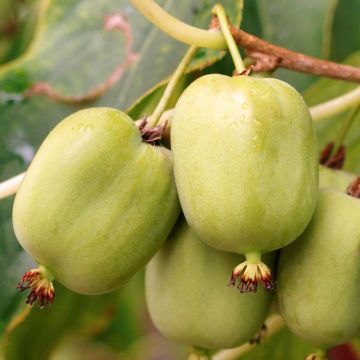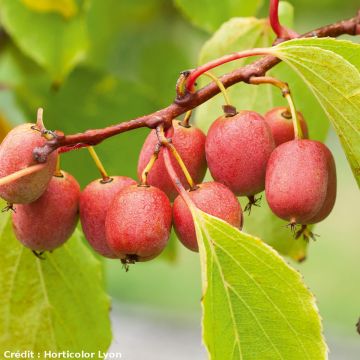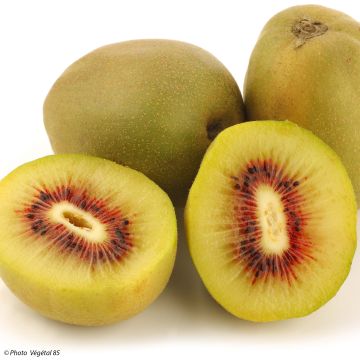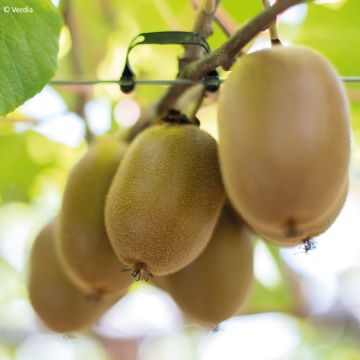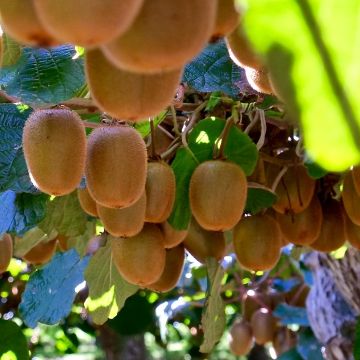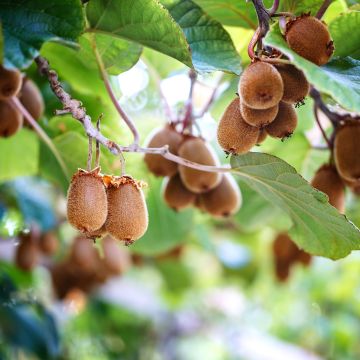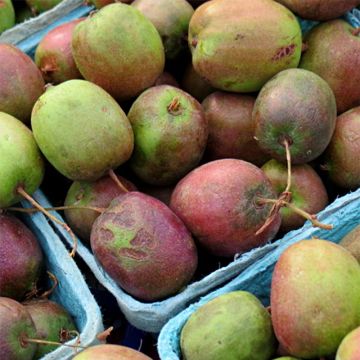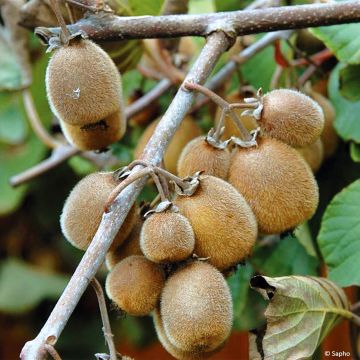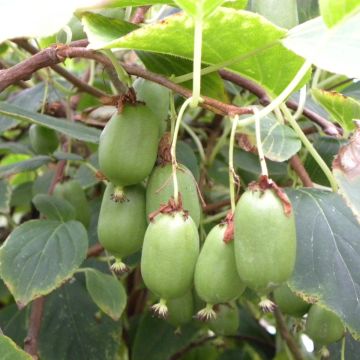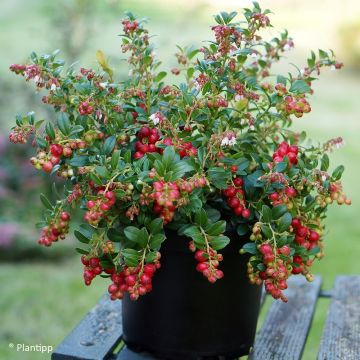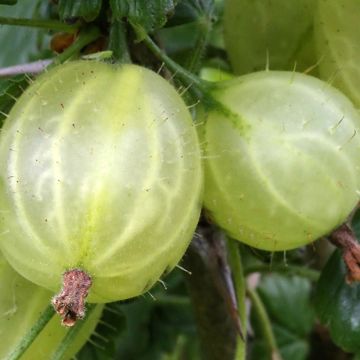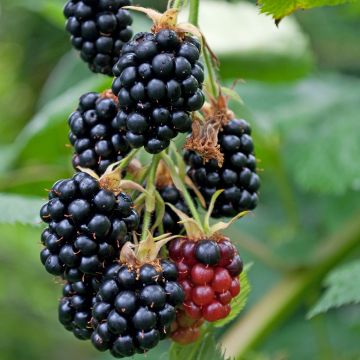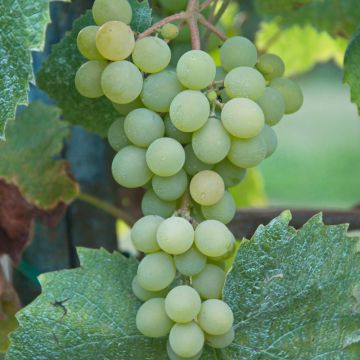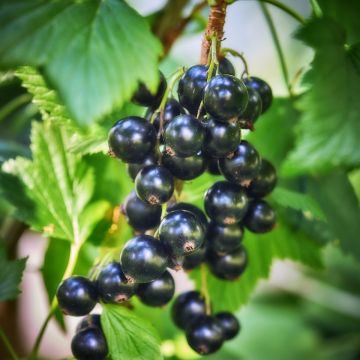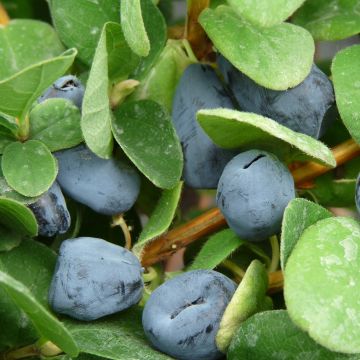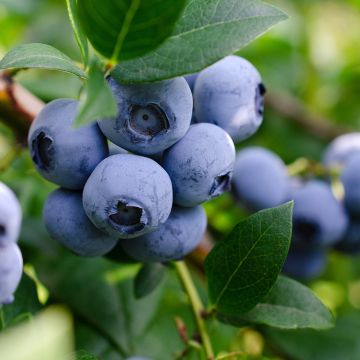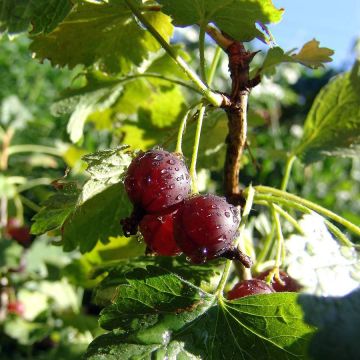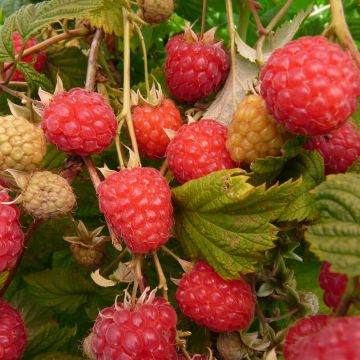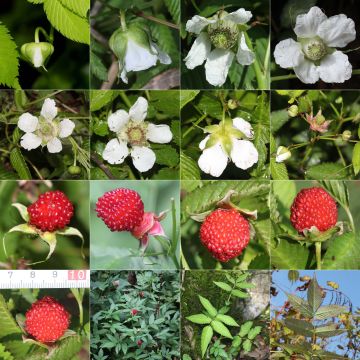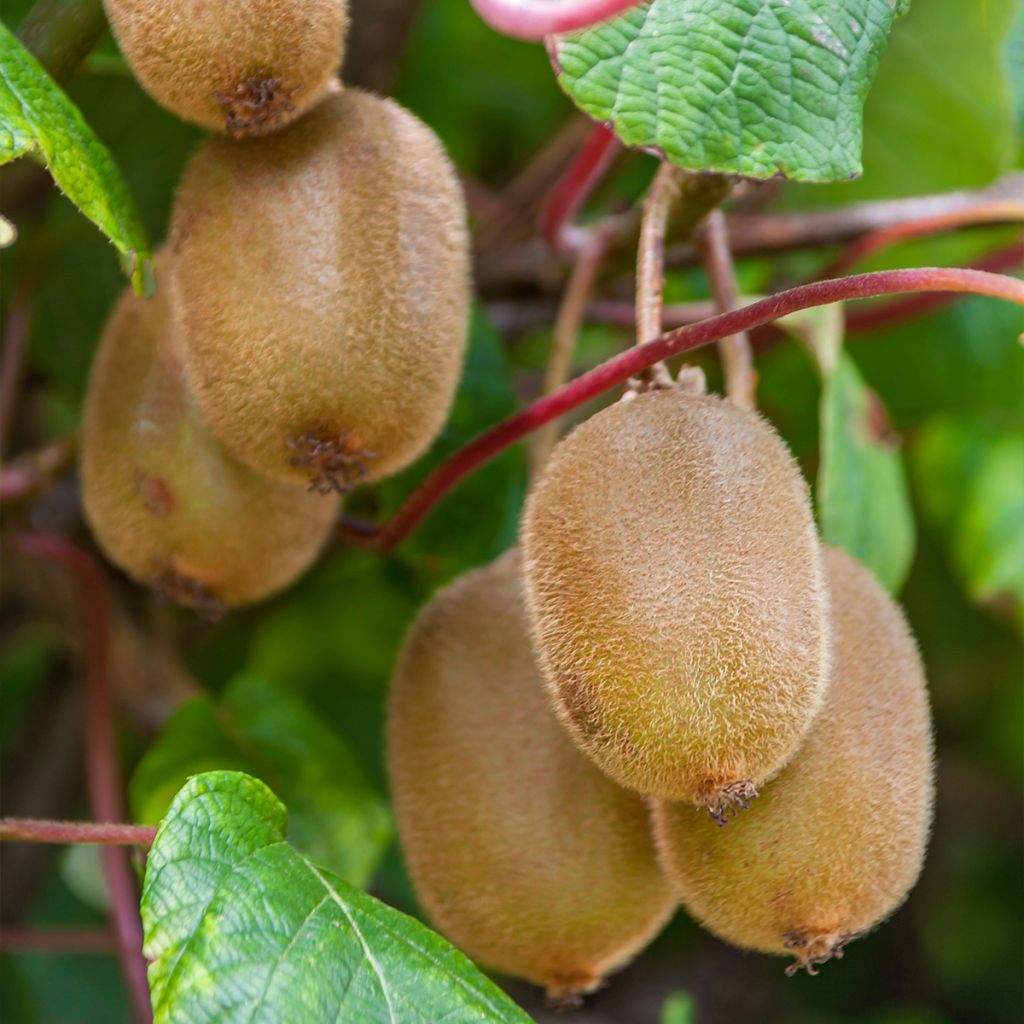

Kiwi Plant Boskoop (self-fertile) - Actinidia deliciosa
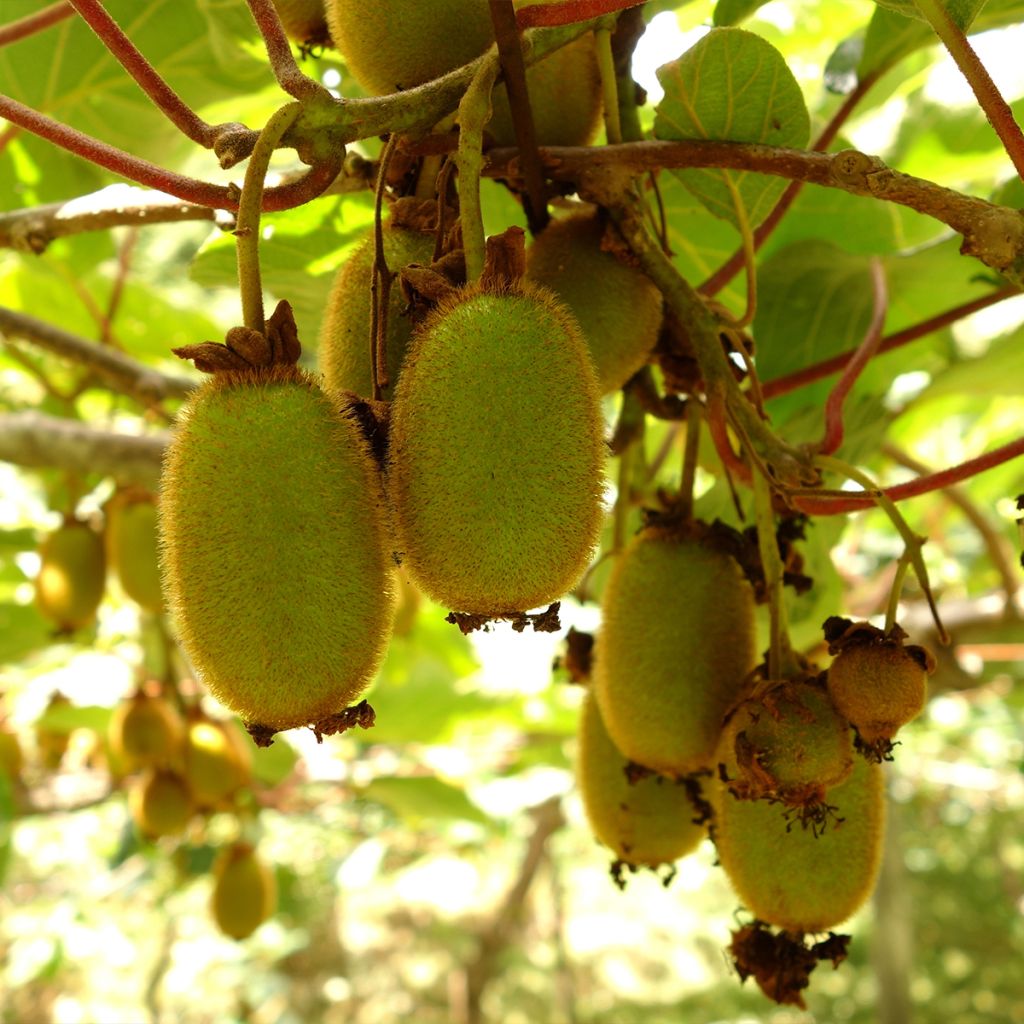

Kiwi Plant Boskoop (self-fertile) - Actinidia deliciosa
Kiwi Plant Boskoop (self-fertile) - Actinidia deliciosa
Actinidia deliciosa Boskoop
Chinese Gooseberry, Kiwi Fruit, Kiwi
This item cannot be shipped to the selected country
Delivery charge from €5.90
More information
Schedule delivery date,
and select date in basket
This plant carries a 6 months recovery warranty
More information
We guarantee the quality of our plants for a full growing cycle, and will replace at our expense any plant that fails to recover under normal climatic and planting conditions.
From €5.90 for pickup delivery and €6.90 for home delivery
Express home delivery from €8.90.
Description
A single Boskoop Kiwi plant is enough to produce abundantly, it is said to be self-fertile. In October-November, this variety produces ovoid fruits with a brownish-red hairy skin, of small to medium size. Delicately tasty, the tender green pulp is sweet and juicy, with a grainy texture. Low in calories, this fruit is rich in calcium, vitamin C and E, fibre, minerals, and antioxidants, making it a treasure for our diet. The branches of the Chinese Kiwi need support: a trellis, pergola, arbor, or stretched wires. Planting is recommended in autumn, or in spring for areas with cold winters.
In the Kiwi category, the ornamental Kiwi (Actinidia kolomikta), the Kiwaï (Actinidia arguta) with smooth skin also known as Siberian Kiwi or Hardy Kiwi, and the Kiwi (Actinidia chinensis or deliciosa) with hairy skin also known as Chinese Gooseberry or yang tao can be found. All three belong to the Actinidiaceae family. Originally from China, the Actinidia deliciosa or chinensis produces long branches that can reach 5 to 7 metres (16 to 23 feet) in length. The branches bear deciduous leaves, round in shape, measuring 12 to 20cm (5 to 8in) in diameter, dark green and with very pronounced veins. From the third or fourth year of cultivation, in May-June, male flowers with cream-white petals appear in the leaf axils, grouped in axillary cymes, and solitary female flowers, 3 to 4cm (1 to 2in) in size, with a yellowish-white colour. The fleshy fruit of the Boskoop Kiwi, oval to elliptical in shape, weighing 30 to 40 grams, has a thin skin covered with hairs. It reaches maturity from October to November and can be stored for one to two weeks after harvest. The flesh is tender, sweet, and juicy, with numerous oily seeds that give the pulp a grainy texture. Peeling is relatively easy and the entire interior is edible. Fruiting begins 3 to 4 years after planting.
It is enjoyable to consume kiwi fruits fresh from the garden, but they also keep very well for about two weeks in the refrigerator. They ripen faster when placed next to bananas or apples. Production can reach up to 30 to 50kg per plant. Kiwi can be consumed fresh, its flavour is refreshing and melting, a real delight. It can be enjoyed in pies, fruit salads, dairy desserts, jams, jellies, compotes, fruit juices, and cocktails. As a sweet vegetable, it can tenderly accompany white meat dishes (poultry, veal, pork, etc.).
In addition to its fruiting qualities, its abundant foliage, fragrant flowering, and the generosity of its branches provide the Kiwi with an ornamental use in the garden. This plant needs to be trained on a solid support such as stretched wires on a frame, a trellis, an arbour, a pergola, or a fence. The Boskoop Actinidia deliciosa is a self-fertile kiwi variety, capable of fruiting without the presence of another kiwi plant nearby, so it is highly recommended for a small-sized garden or when space is limited.
Report an error about the product description
Kiwi Plant Boskoop (self-fertile) - Actinidia deliciosa in pictures
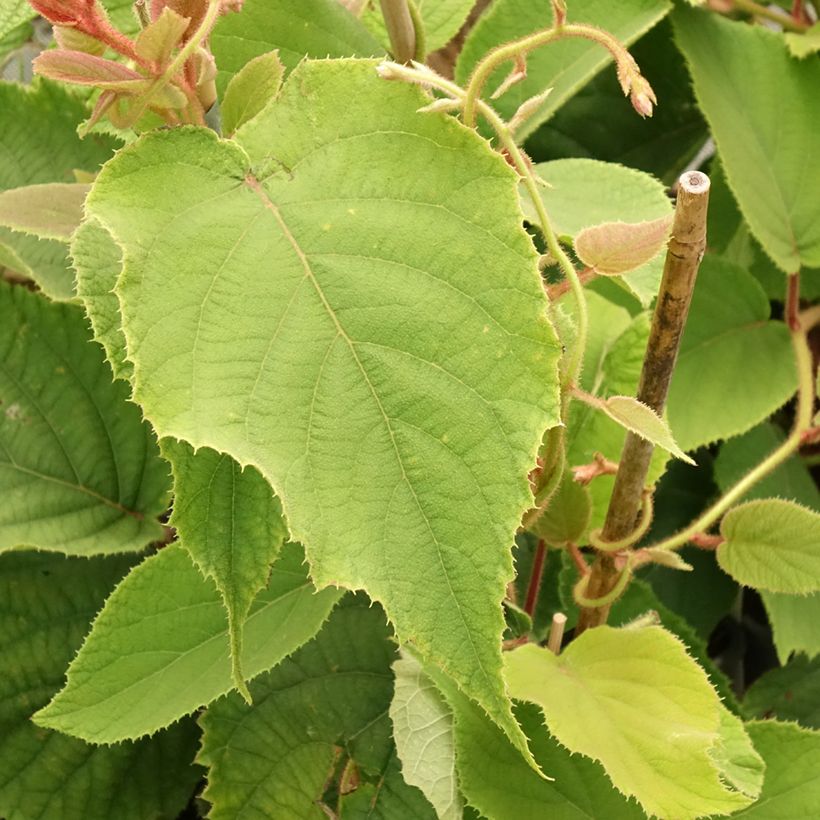

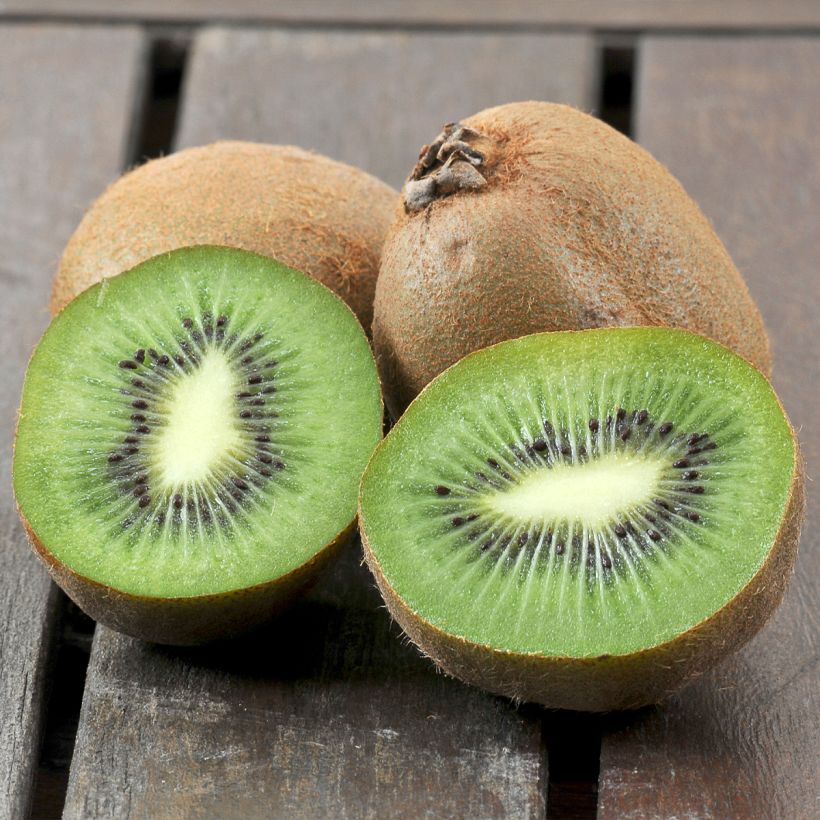

Plant habit
Fruit
Flowering
Foliage
Botanical data
Actinidia
deliciosa
Boskoop
Actinidiaceae
Chinese Gooseberry, Kiwi Fruit, Kiwi
Cultivar or hybrid
Other Kiwi bush
Planting and care
Planting the Boskoop Kiwi is preferably done in autumn, but can be done throughout the year except during freezing periods. The Kiwi thrives in rich, light, and well-drained soil, lime-free, that remains slightly moist. The plant dislikes stagnant moisture, drought, and its foliage turns yellow in alkaline soil. Plant it in a sunny position sheltered from strong winds.
Space the plants 3 to 4m (10 to 13ft) apart. Dig a hole 50cm (20in) in all directions. Spread a layer of gravel in the bottom and then a layer of soil mixed with compost. Place the root ball (the collar of the plant should be level with the ground) and cover with soil. Provide it with a sturdy support to help its branches climb. Firmly tamp down and water generously. The Kiwi has trailing roots that develop horizontally under the surface of the soil, requiring only light surface hoeing if necessary. Mulch the plants for the first three winters.
The Kiwi requires little maintenance, simply provide regular watering. In periods of high heat, water it 1 to 2 times a week. Once established and rooted, the plant can fend for itself and becomes less water-hungry, except in very hot and dry areas in summer. In late winter, bury some well-decomposed organic fertiliser or manure at the base of the plant. Train the stems as they grow by tying them to the support without squeezing them too tightly. They will wrap around the support.
Not very sensitive to insects and pests, the Kiwi can nevertheless be affected by red spider mites in a hot and dry environment. To eliminate them, you can lightly and regularly spray water on the foliage and the soil.
Planting period
Intended location
Care
-
, onOrder confirmed
Reply from on Promesse de fleurs
Berries
Haven't found what you were looking for?
Hardiness is the lowest winter temperature a plant can endure without suffering serious damage or even dying. However, hardiness is affected by location (a sheltered area, such as a patio), protection (winter cover) and soil type (hardiness is improved by well-drained soil).

Photo Sharing Terms & Conditions
In order to encourage gardeners to interact and share their experiences, Promesse de fleurs offers various media enabling content to be uploaded onto its Site - in particular via the ‘Photo sharing’ module.
The User agrees to refrain from:
- Posting any content that is illegal, prejudicial, insulting, racist, inciteful to hatred, revisionist, contrary to public decency, that infringes on privacy or on the privacy rights of third parties, in particular the publicity rights of persons and goods, intellectual property rights, or the right to privacy.
- Submitting content on behalf of a third party;
- Impersonate the identity of a third party and/or publish any personal information about a third party;
In general, the User undertakes to refrain from any unethical behaviour.
All Content (in particular text, comments, files, images, photos, videos, creative works, etc.), which may be subject to property or intellectual property rights, image or other private rights, shall remain the property of the User, subject to the limited rights granted by the terms of the licence granted by Promesse de fleurs as stated below. Users are at liberty to publish or not to publish such Content on the Site, notably via the ‘Photo Sharing’ facility, and accept that this Content shall be made public and freely accessible, notably on the Internet.
Users further acknowledge, undertake to have ,and guarantee that they hold all necessary rights and permissions to publish such material on the Site, in particular with regard to the legislation in force pertaining to any privacy, property, intellectual property, image, or contractual rights, or rights of any other nature. By publishing such Content on the Site, Users acknowledge accepting full liability as publishers of the Content within the meaning of the law, and grant Promesse de fleurs, free of charge, an inclusive, worldwide licence for the said Content for the entire duration of its publication, including all reproduction, representation, up/downloading, displaying, performing, transmission, and storage rights.
Users also grant permission for their name to be linked to the Content and accept that this link may not always be made available.
By engaging in posting material, Users consent to their Content becoming automatically accessible on the Internet, in particular on other sites and/or blogs and/or web pages of the Promesse de fleurs site, including in particular social pages and the Promesse de fleurs catalogue.
Users may secure the removal of entrusted content free of charge by issuing a simple request via our contact form.
The flowering period indicated on our website applies to countries and regions located in USDA zone 8 (France, the United Kingdom, Ireland, the Netherlands, etc.)
It will vary according to where you live:
- In zones 9 to 10 (Italy, Spain, Greece, etc.), flowering will occur about 2 to 4 weeks earlier.
- In zones 6 to 7 (Germany, Poland, Slovenia, and lower mountainous regions), flowering will be delayed by 2 to 3 weeks.
- In zone 5 (Central Europe, Scandinavia), blooming will be delayed by 3 to 5 weeks.
In temperate climates, pruning of spring-flowering shrubs (forsythia, spireas, etc.) should be done just after flowering.
Pruning of summer-flowering shrubs (Indian Lilac, Perovskia, etc.) can be done in winter or spring.
In cold regions as well as with frost-sensitive plants, avoid pruning too early when severe frosts may still occur.
The planting period indicated on our website applies to countries and regions located in USDA zone 8 (France, United Kingdom, Ireland, Netherlands).
It will vary according to where you live:
- In Mediterranean zones (Marseille, Madrid, Milan, etc.), autumn and winter are the best planting periods.
- In continental zones (Strasbourg, Munich, Vienna, etc.), delay planting by 2 to 3 weeks in spring and bring it forward by 2 to 4 weeks in autumn.
- In mountainous regions (the Alps, Pyrenees, Carpathians, etc.), it is best to plant in late spring (May-June) or late summer (August-September).
The harvesting period indicated on our website applies to countries and regions in USDA zone 8 (France, England, Ireland, the Netherlands).
In colder areas (Scandinavia, Poland, Austria...) fruit and vegetable harvests are likely to be delayed by 3-4 weeks.
In warmer areas (Italy, Spain, Greece, etc.), harvesting will probably take place earlier, depending on weather conditions.
The sowing periods indicated on our website apply to countries and regions within USDA Zone 8 (France, UK, Ireland, Netherlands).
In colder areas (Scandinavia, Poland, Austria...), delay any outdoor sowing by 3-4 weeks, or sow under glass.
In warmer climes (Italy, Spain, Greece, etc.), bring outdoor sowing forward by a few weeks.

































